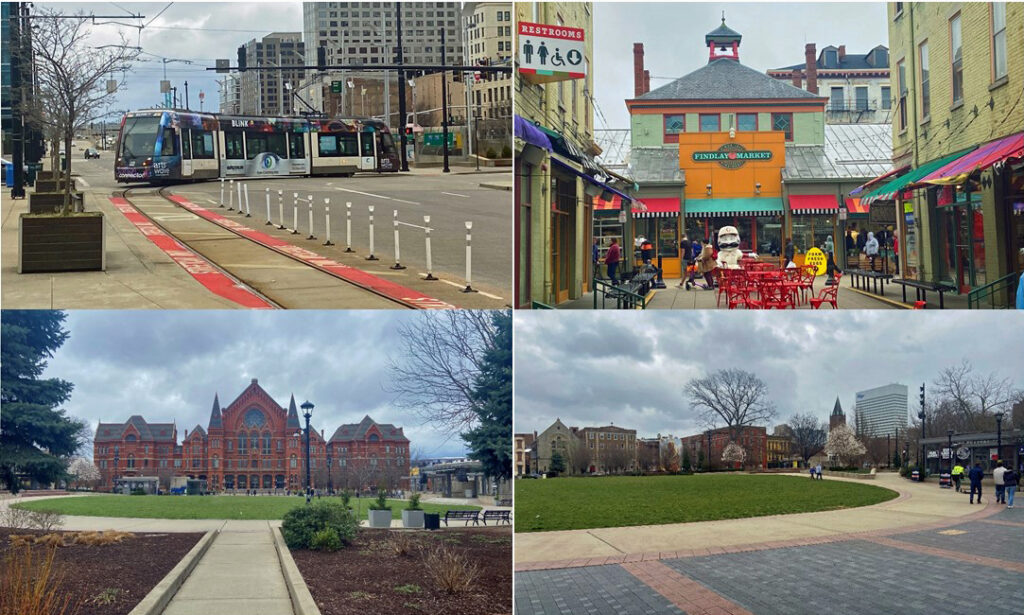As we continue exploring places within driving distance of Indianapolis, today we visit Over-the-Rhine in Cincinnati, Ohio.
In the 1830s, German immigrants began settling north of the Miami and Erie Canal that marked the northern end of downtown Cincinnati. Natives, facetiously (and disparagingly), began calling the canal “the Rhine” and the area where the Germans lived “over the Rhine.” The Germans established numerous breweries using technology they brought from home and Findlay Market was built in the neighborhood in 1852 using then-new ironworks technology. In 1863, Cincinnati acquired four acres in the area that had been cemeteries and established what became Washington Park. In 1878, a Victorian Gothic Revival music hall was built just west of the park over a pauper’s cemetery. The massive hall hosted the 1880 Democratic National Convention.
After the canal failed, it was covered by what is now Central Parkway, but the name “Over-the-Rhine” (or “OTR”) continued. In the 1940s, descendants of the original OTR residents began leaving and the area and its historic buildings began deteriorating. After major riots in 2001, significant local investments were made to revitalize the area. Today, the renovated (and supposedly haunted) Cincinnati Music Hall, a National Historic Landmark, is home to the Cincinnati Symphony Orchestra and other major performing arts organizations. The restored Findlay Market, home to more than 50 vendors, is among the world’s greatest markets. The expanded Washington Park hosts concerts and sporting events. Re-established breweries offer tastings and tours and fashionable bars and restaurants have returned. Travel between OTR’s places of interest is facilitated by the Connector, a free streetcar line with 18 stops connecting OTR with downtown Cincinnati.
Not everyone is happy with OTR’s revitalization, which displaced people who once lived there. But for visitors to Cincinnati, OTR provides a chance to imagine what life was like in the nineteenth century.

Comments are closed.